Cat Allergy Testing: Reliability & How It Works
By Jessica Kim
Updated on
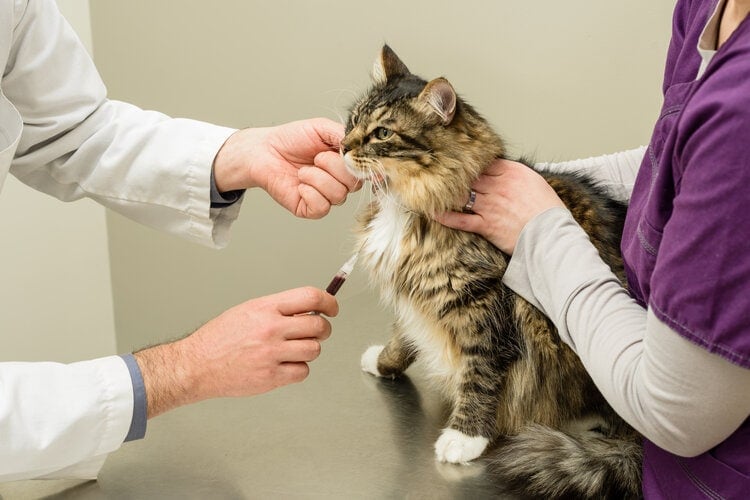
Allergies are a common medical condition affecting cats. They can cause several different health issues for cats, including itching and scratching, irritation of the skin, coughing, sneezing, wheezing, vomiting, and diarrhea. An allergen is any foreign substance that can cause an allergic reaction. Allergies can be very frustrating to deal with because your cat can be hyper-sensitized to more than one allergen and it’s often difficult and time-consuming to determine what allergens they are reacting to.
Conducting a cat allergy test can help you and your vet determine what sort of allergens your cat is sensitive to and should avoid contact with. So, if your vet has diagnosed your cat with allergies, it’s important to know what sort of testing options are available. Allergy tests will help you understand what your cat might be allergic to and help relieve any discomfort your cat is experiencing either by the avoidance of the allergens in question or by following a specific treatment.
How Does Allergy Testing Work?
Cats can be allergic to a wide variety of substances. Common culprits of allergies in cats include flea saliva (the most common) and environmental allergens like house dust, pollen and mold. Certain foods can also trigger dietary allergies. Food allergies are rarer in cats. Most cats with food allergies are allergic to chicken, beef, fish, and dairy. Allergic reactions are either caused by contact, inhalation, or consumption.
Before proceeding with allergy testing, your vet will perform detailed and thorough investigations in order to rule out other causes for your cat’s signs that are not related to an allergy. If none are identified, then a diagnosis of allergic disease is made based on exclusion. After this has been confirmed, your vet might advise further allergy testing. If the first step is skipped and allergy testing is performed straight away without ruling out other causes, the results might be inaccurate and difficult to interpret. Therefore, they may not benefit your cat or your wallet, as they’re likely to be costly.
Testing a cat with suspected allergies is performed by your vet or a veterinary dermatologist using several methods:
- Testing the presence of specific antibodies that form in the cat’s body in response to allergens (a blood test called the radioallergosorbent test)
- Measuring the skin reaction to a specific allergen after injecting it into the cat’s skin under anesthesia (intradermal skin testing)
- Observing the response to avoidance of a specific food allergen and then its reintroduction (elimination diet trial and food challenge)
The only food allergy test performed at home is a process called an elimination diet.1 Your veterinarian will advise you on the best protein source and food to give to your cat for at least eight weeks and monitor your cat’s response to it. Blood testing is not considered adequate for food allergies in cats as the results are unreliable.2
Other allergy testing in cats needs to be performed and supervised by your veterinarian at the clinic. We will discuss them in detail in the next paragraph.
The 3 Different Types of Cat Allergy Tests
In this post, we will explain the three allergy testing methods (radioallergosorbent test (RAST), intradermal skin testing, and food elimination trial), as well as how they are performed. While it’s great to be informed, remember that your veterinarian is the best person to guide you on what kind of allergy test is best for your cat.
1. Radioallergosorbent Testing (RAST)
The RAST is a type of blood test that helps your vet determine if your cat has environmental allergies. It should be performed after the diagnosis of allergies is made based on the exclusion of other causes. Your veterinarian will draw a blood sample from your cat. The sample will be taken to a lab to be examined for any antibodies that have been produced in response to certain allergens, like mold or various pollen. It can take one to two weeks for the lab results to return.
The RAST is not meant to be used for diagnosing food allergies, due to a shown lack of accuracy and unreliability. It is mostly effective for environmental allergens. It is also often used in testing for flea saliva allergy, but the results need to be interpreted alongside the cat’s signs and history of flea exposure.
In most cases, your cat doesn’t have to be taken off of their allergy medication. This way, your cat doesn’t have to experience any unpleasant signs of allergy while awaiting the testing process.
The decision of whether to go forward with the pricey RAST test mainly depends on whether you would take the next step and consider immunotherapy for your cat, as one is a prelude to the other. Immunotherapy is a modified preparation of the appropriate allergens in an attempt to create tolerance and reduce signs of allergies. It is often recommended in cases of environmental allergies in order to desensitize the patient long term and relieve the signs with monthly injections administered by your vet. Success rate for the treatment is around 60-78% and treatment is often lifelong.3 If you wouldn’t go ahead with immunotherapy, it’s best to speak to your vet and see if performing RAST is actually beneficial to your cat.
2. Intradermal Testing
Intradermal testing is considered a more accurate allergy test and the gold standard for diagnosing environmental allergies in cats, though it can also be used for flea saliva allergen.4 This test involves injecting small amounts of potential allergens into your cat’s skin while the cat is under sedation. If your cat has an allergy, a reaction will form at the injection site. Veterinary dermatologists conduct this test by typically shaving off a big section of your cat’s coat so that they can easily inject the allergens and view the results. Unlike the RAST, immediate results are available with intradermal testing. However, it can be particularly uncomfortable for cats because they cannot take any antihistamines, steroids, or anti-itch medication before the test. There is a small risk of adverse reactions during the test, and your veterinary dermatologist will monitor for these.
However, one issue with the actual accuracy of this test and the interpretation of results is the lack of standardization. This means that the allergens and their dosage can differ between veterinary clinics, and the interpretation can be subjective and based on experience. This can lead to false positive or negative results. Speak to your vet about this test, your expectations, and whether it would be appropriate for your cat.
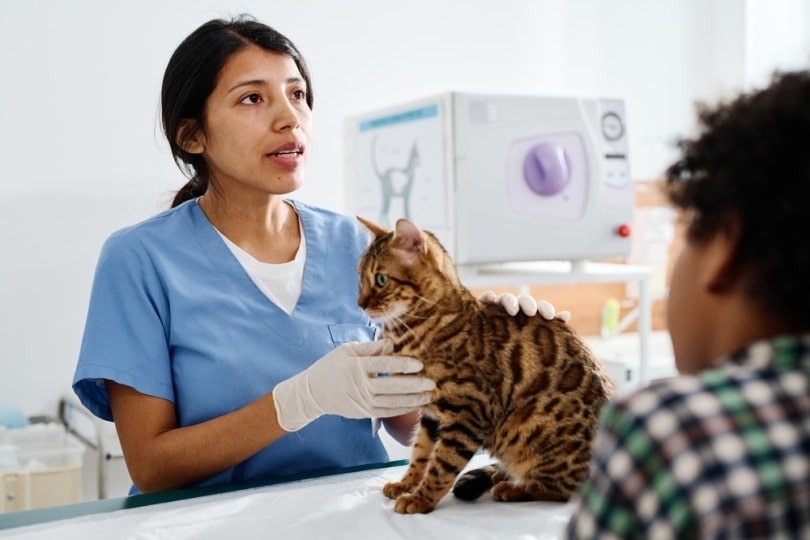
3. Testing for Food Allergies
Food allergies can be challenging to detect, and they require a longer process. Veterinarians usually detect food allergies by putting cats on a specialized diet with limited ingredients. One option is to give your cat a hydrolyzed diet in which the protein molecules are broken down to a very small size so they can’t be recognized by your cat’s immune system. Another option is feeding a novel protein that the cat has never been exposed to in their previous diets.
Both of these are also easily digestible and don’t contain any common food allergens. Once your cat has fully adjusted to this diet and the signs of allergy have decreased significantly or even resolved, your veterinarian might recommend introducing a common food allergen into their diet again one by one. This is called a food challenge. Your veterinarian may advise feeding your cat their old food or any protein they suspect is the cause of the allergy. The goal is to check to see if they have any allergic responses to it. These food trials can take several months to complete because the food allergens have to be tested one by one. Your cat also has to return to the specialized diet after each time they try a common food allergen. You and your vet might decide not to perform the food challenge test if your cat is doing well on the elimination hydrolyzed or novel diet.
Important to remember is that your cat is only allowed to eat the prescription diet during this test, often for a minimum of 8 weeks, in order to receive an accurate response and relieve the signs of allergy. Any small snack that the cat is given on the side might cause the signs of allergies to come back and restart your elimination trial. This diet is usually given lifelong in order to control the signs.
Where Is Cat Allergy Testing Available?
Cat allergy tests are available through your veterinarian or a veterinary dermatologist. They will be able to perform a full examination of your cat and additional investigations to first confirm that your cat has an allergy. Then they can recommend any further allergy testing that is suitable for your cat. However, keep in mind that no allergy test is 100% accurate, and the results need to be interpreted alongside your cat’s signs, other test results, and medical history.
Allergies are often very challenging and frustrating to diagnose and manage. Your vet is the best person to speak to, and they will prescribe appropriate medication to help treat your cat’s allergies. If your cat has a suspected food allergy, your veterinarian can recommend a veterinary diet that contains limited ingredients and also help you monitor for signs of improvement.
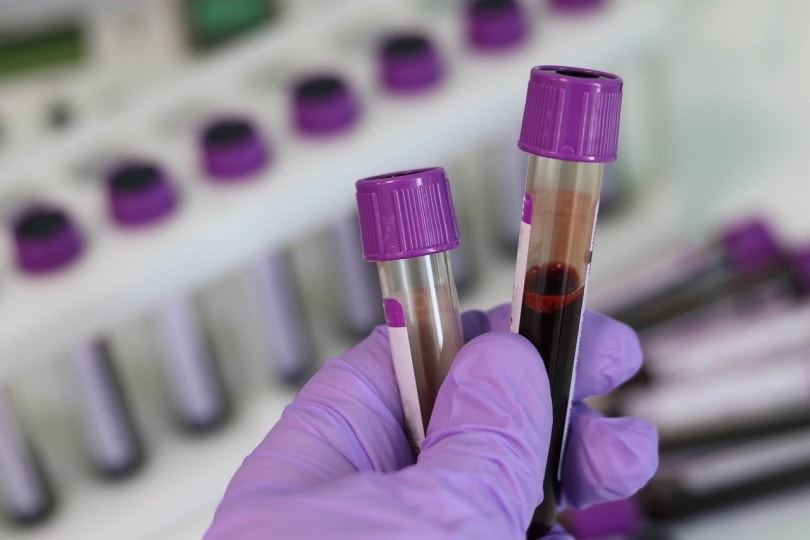
Frequently Asked Questions
How much do cat allergy tests cost?
Testing for cat allergies can get costly, but not treating your cat’s allergy will become even more expensive and cause the signs to worsen, making your cat very uncomfortable. Your veterinarian may conduct blood tests and skin tests, which can cost between $200 to $300 each, or more if performed by a certified veterinary dermatologist. If you’re testing your cat for food allergies, they will need to eat a specialized diet. Your vet can point you toward an adequate hypoallergenic diet that is either hydrolyzed or novel protein, depending on what is most appropriate for your cat. These types of diets are considered to be premium cat food and can cost between $30 to $60 per 10-pound bag. Veterinary diets that require prescriptions can be more expensive.
There are some home tests for allergies on the market, but their efficacy is questionable. Before spending money on testing methods that have not been proven, it’s best to first speak to your veterinarian. As tempting as it can be to consider cheaper non-recommended food or home test options, consider that allergies, when undiagnosed, misdiagnosed or left untreated, can cause significant illness in your cat, with skin, respiratory or gastrointestinal signs, and treating this will be even more expensive. Not to mention, your cat will be uncomfortable. So contacting your vet at the very first suspicion of your cat having allergies will allow them to reach a diagnosis promptly and start your cat on appropriate medication.
Are allergy tests covered by pet insurance?
This is best discussed with your pet insurance provider, as there are many policy and cover options available. However, since most pet insurance plans cover medical bills related to accidents and illnesses, your pet insurance company might cover allergy tests and treatments as well. This will depend on your particular policy and annual limits or limits per condition. The only caveat is that allergies must not be a pre-existing condition for your cat. So, if your cat has already been diagnosed with an allergy and you enroll them in a plan after receiving the diagnosis, your pet insurance company will not help pay for any treatments and further testing related to the allergy. Therefore, it’s important to get your cat on a pet insurance plan early on, ideally as soon as you get them or as a kitten, so that you can receive coverage for any allergies that they may develop later in life.
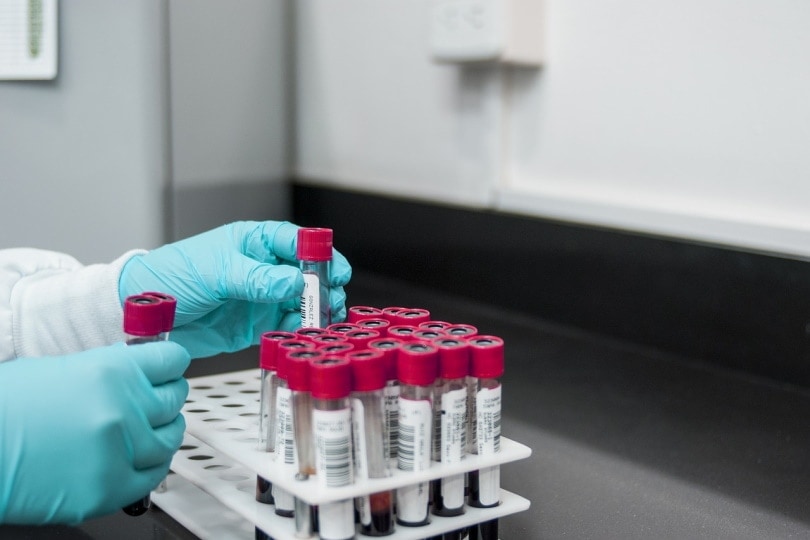
What’s the most accurate allergy test for cats?
There is no easy answer to this question at the moment as there is no agreed consensus in the veterinary profession due to lack of research. Choice of test and their accuracy depends on which allergens are being tested.
When it comes to food allergies, a food elimination trial is the best test to confirm which proteins your cat should avoid, but the process might be lengthy. Blood testing for food allergens should not be used for making a diagnosis, as the results are variable and often unreliable. When it comes to testing for flea saliva allergy, both the blood and intradermal tests can be used, but they are not necessarily very accurate or useful on their own. Diagnosis is established based on clinical signs during the presence of fleas and the resolution of signs with adequate flea control and prevention.
A RAST blood test is considered appropriate for environmental allergens and flea saliva testing and is used as a precursor for immunotherapy, but there is a chance of false positives or negatives, and without a full workup, the results might be difficult to interpret. Intradermal skin testing is considered the gold standard for environmental allergies, but it can have some limitations due to the testing procedure, possible adverse effects, and risk of subjective interpretation.
Your vet will be able to advise you on the best choice of tests for your cat depending on the type of allergy diagnosed and treatment options.
What treatment is available for cat allergies?
Treatment for cat allergies will vary depending on the type of allergy and severity of symptoms. For example, flea allergies usually cause significant skin irritation in allergic cats. They’re typically treated by eliminating fleas from your cat’s skin and coat, and sometimes with systemic anti-itch medication and antibiotics, in more severe cases. Your cat will need to take regular preventative flea medication prescribed and advised by your vet to prevent further infestations that will trigger allergic reactions.
Allergic reactions on the skin often require your cat to take antihistamines and/or immunosuppressant drugs in order to alleviate the itching. Some of the common drugs can involve corticosteroids, cyclosporine or immunotherapy. Sometimes, your cat can get a bacterial infection if their scratching or licking causes skin sores. These infections would require antibiotic treatment.
Cats with food allergies often must switch to limited-ingredient diets that omit common food allergens. Veterinarians may recommend cat foods that use novelty meats or contain hydrolyzed protein. This diet needs to be given lifelong in most cases, as otherwise the signs of allergies will recur. Your vet will prescribe the most appropriate medication for your cat and recommend regular follow ups to make sure they are doing well.
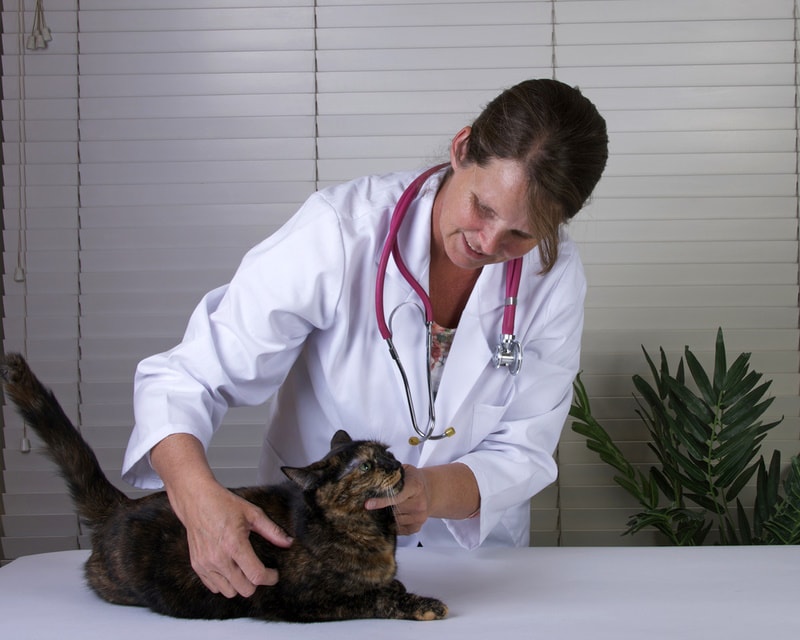
Conclusion
Cat allergy tests are available to help your vet confirm any allergies your cat may have. You and your vet or certified dermatologist will work together in order to find out what’s causing your cat’s allergies. Cat allergy testing usually takes a good amount of time to determine the responsible allergens and requires a lot of patience. However, the effort and commitment will be worth it because they’ll help prevent your cat from experiencing future discomfort.
Featured Image Credit: SingingMedia, Shutterstock













